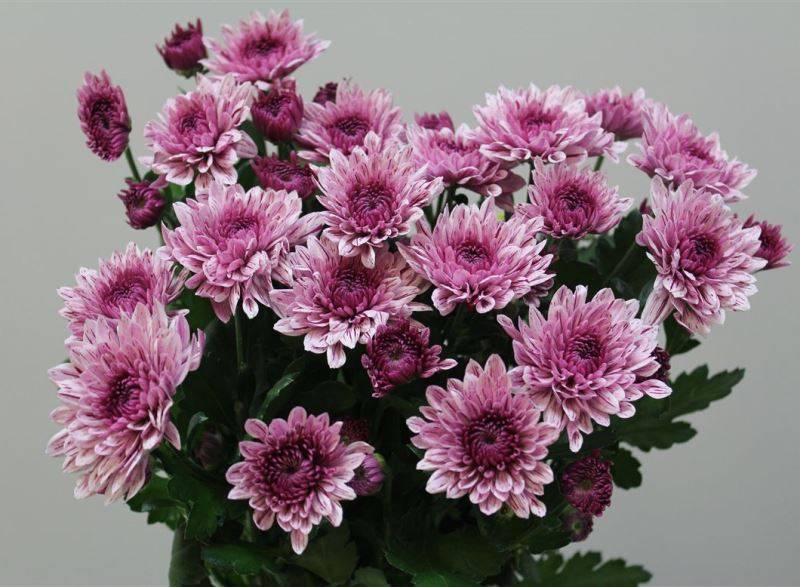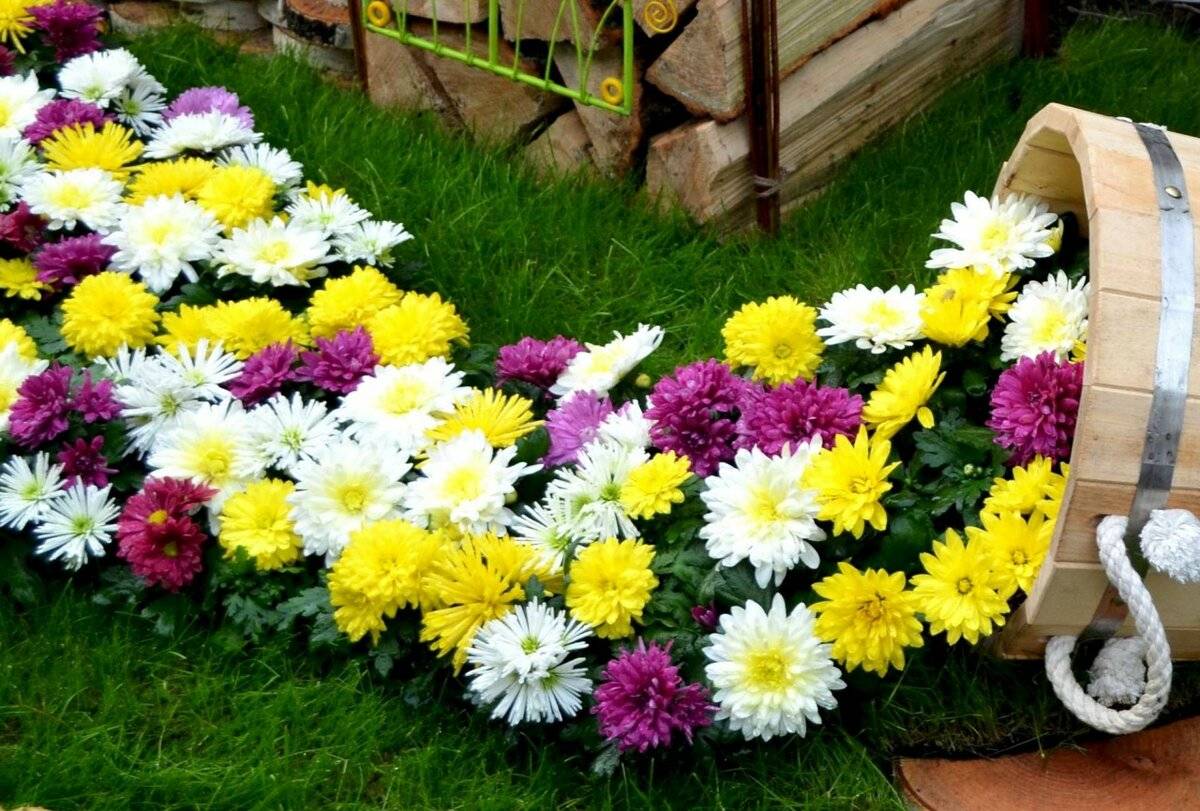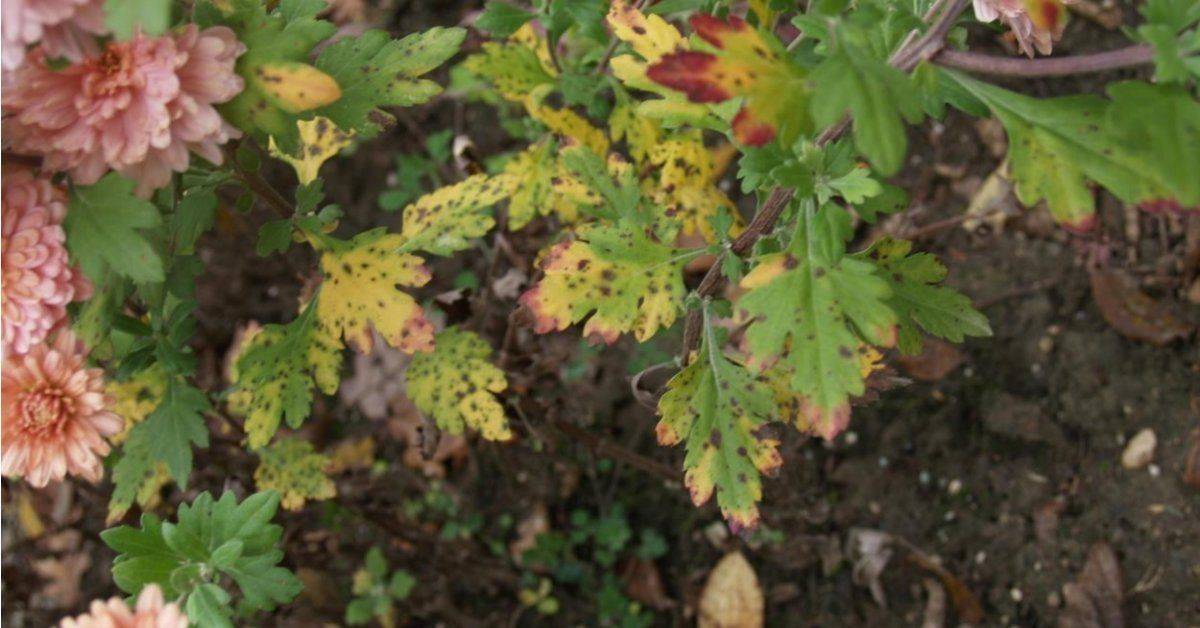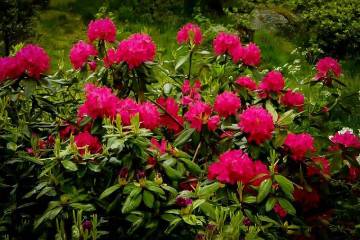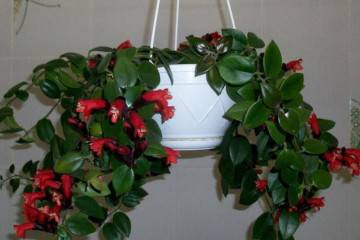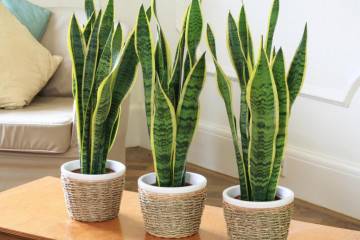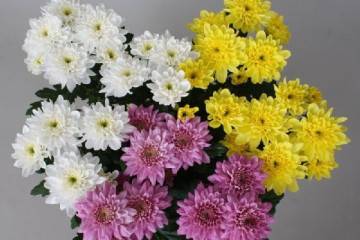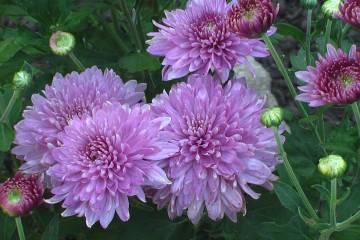Chrysanthemum Zembla - care and reproduction
Content:
Chrysanthemum Zembla is one of the most demanded and popular flowers in China and Japan. In China, there are many legends dedicated to this flower.
Chrysanthemum Zembla - what kind of flower is it, what family does it belong to?
Zembla is a kind of large-flowered chrysanthemum, belongs to the Astrovye family. A perennial plant is grown as an ornamental plant. Chrysanthemum single-headed Zembla has the shape of a bush and fits perfectly into garden compositions and flower beds.
Brief description, history of origin or selection
If you grow a bush in a pot, it will not grow more than 50 centimeters, but Zembla bush chrysanthemum can reach a height of up to 1 meter. The plumose leaves are trifoliate, with small villi on the front, and smooth to the touch on the underside. Inflorescences are large yellow, purple, white shades with diameters of 20-25 centimeters.
Plant varieties, what they look like
All existing Zembla varieties are usually referred to as "Zembla chrysanthemum mix".
Chrysanthemum Zembla Brazil
It differs in inflorescences of light yellow color, the edges of the petals are pale green.
Chrysanthemum Zembla Lime
It is characterized by snow-white petals with light green edges, which are located on the outer circumference. In the center, the petals are painted in a light green shade.
Chrysanthemum Zembla Vip
According to the description, the shape of the flowers does not differ from other varieties, but the colors are completely different. The petals are painted in a blurred delicate lilac color.
Chrysanthemum Zembla White
The petals are larger than those of other varieties. The inflorescences are painted in a solid uniform white shade, in honor of which the variety got its name - White. The leaf plates are dark green in color.
Chrysanthemum Zembla Lilak
Inflorescences are painted in a light delicate purple color. The petals are slightly concave towards the center.
Chrysanthemum Zembla Yellow and others
Zembla Yellow is absolutely identical to Zembla White, the only difference is in the color of the buds. They have a solid yellow color.
There are other little-known varieties of Zembla chrysanthemum that are definitely worth paying attention to:
- Purple - deep purple petals;
- Pink - flowers have a beautiful light pink color.
Growing bush chrysanthemum Zembla mix in the garden
Chrysanthemums are thermophilic and light-loving flowers, so when growing it is worth focusing on this special attention.
Location selection
Chrysanthemums are especially sensitive to lack of natural light. A sunny hour day should not be shorter than 6 hours.Therefore, you should carefully consider the choice of a landing site. It should be well lit, but at the same time, it should not be too open.
How to prepare the soil and flower for planting
For planting flowers, the soil is prepared in advance with a special earthen mixture, consisting of loose turf soil, compost, river sand and peat. Drainage material is prepared separately, it can be small pebbles, expanded clay or brick chips.
How to care for a plant
Caring for a chrysanthemum mix of the Zembla variety in the garden implies a certain set of measures.
Watering rules and humidity
Timely watering is especially important for flowering plants. The soil under Zembla should not dry out, but the plant should not be flooded either. So that rot from overflow does not appear on the roots or it does not dry out, experienced growers regulate the moisture level by mulching the soil and drainage.
Chrysanthemums have no special requirements for air humidity. It is important not to allow sharp drops in indicators.
Top dressing and soil quality
In spring and early summer, before flowering, chrysanthemum is fed with complex mineral fertilizers twice a month. For a more effective effect, it is better to use liquid fertilizers. During flowering, fertilizers are changed to potash fertilizers, which have a beneficial effect on the formation of buds.
The soil should be loose with good air permeability. The acidity level is allowed averages.
Pruning and replanting
To increase the flower's ability to give new shoots, it must be pinched regularly. Be sure to cut off already faded flowers and dried leaf plates. If rapid growth of the bush is necessary, then cut off its upper part.
In the first five years, the transplant should be carried out annually every spring. After - one transplant in 2-3 years is enough.
Wintering a flower
Before freezing, the chrysanthemum bush is cut to the ground. Then it is dug up with a lump of earth and brought into a room where the temperature of the content is no more than 10 degrees. During wintering, the plant should be kept in a shaded area.
Another wintering option is to transplant the bush into a pot and grow it at home in the winter.
Features of flowering plants
With proper care and favorable conditions, Zembla blooms profusely and colorfully with large flowers.
A period of activity and rest
Chrysanthemums begin to bloom in early autumn, and flowers cut for a bouquet can stand in water for almost a month. After all the buds have faded, the plant retires until early spring.
Types and shape of flowers
Most varieties of Zembla chrysanthemum have yellow petals, but there are flowers with lilac, white, pink or purple flowers. The petals are in the form of small tongues, they are densely arranged to each other and form large inflorescences up to 20 centimeters in diameter.
Flower reproduction methods
Reproduction of Zembla chrysanthemum is carried out in three ways:
- rooting cuttings;
- sowing seeds;
- dividing the bush.
Propagation by cuttings
An extreme branch is cut off from a healthy bush, planted in a substrate by 2 centimeters and covered with a film. They are placed in a well-lit place and watered regularly. When the cuttings are rooted, they can be planted outdoors.
Seed propagation
A third of the box is filled with soil mixture and moistened. Seeds are planted and sprinkled with earth on top. Cover with glass and put in a lighted place. When the seedlings reach 7-10 centimeters in height, they can be planted in open ground.
Dividing an adult bush
During transplantation, a part is separated from the bush together with the root and planted separately in another place.
Growing problems, diseases and pests
Most often, chrysanthemum suffers from moisture stagnation in the soil. Then various fungal diseases appear: root rot or gray mold. Often, infection occurs due to poor-quality planting material or non-disinfected garden equipment with infectious diseases: mosaic, dwarfism or aspermia.
Of the pests, the most dangerous are thrips and spider mites, which feed on the juicy part of the bush. Insecticides help in their fight.
Only proper care and attention will help to achieve the decorative appearance of the Zembla chrysanthemum. This is not difficult to achieve, the main thing is to carry out all the necessary measures on time and avoid mistakes.
